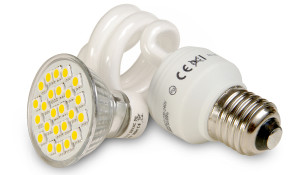 Since many countries around the world have passed legislation that is phasing-out incandescent light bulbs, compact fluorescent lamps (CFLs) and light-emitting diode (LED) light bulbs are quickly becoming the ‘go-to’ lighting source for millions of homeowners and business owners.
Since many countries around the world have passed legislation that is phasing-out incandescent light bulbs, compact fluorescent lamps (CFLs) and light-emitting diode (LED) light bulbs are quickly becoming the ‘go-to’ lighting source for millions of homeowners and business owners.
For most people in the [city] area, LED light bulbs have slowly edged out CFLs as the most popular lighting solution. But that’s not to say fluorescent lamps and tubes don’t have their supporters, however.
So which one is better?
The LED vs. CFL debate has always been a hot topic, which is why we’ve put together this handy guide that explains the core benefits of LED lighting over CFLs in the most objective manner possible.
Similarities
First, let’s cover the similarities between CFLs and LEDs.
- Both types of bulbs are undoubtedly more efficient than the aging classic light bulb, which produced light by literally burning a metal wire. Traditional light bulbs literally produced light as a byproduct of heat.
- LEDs and CFLs also last longer than incandescent bulbs, which have a meager lifespan of a little over 1,000 hours.
Advantages of LED Lighting
And now for the differences – and why LEDs are superior to CFLs.
- Zero Mercury – The process of fluorescence requires the presence of trace amounts of mercury vapor to excite the phosphorous in the CFL bulb. While the amount of mercury in these bulbs is too small to be of any harm to adults, it can pose health risks to small children and pets.In addition, because of the presence of mercury, CFLs are a little trickier to recycle or dispose of when broken. The United States Environmental Protection Agency has outlined a step-by-step approach to CFL disposal, which many find too complicated for their preferences.
- LEDs Work Just Fine in Cold Temperatures – One of the most common and valid criticisms of CFL bulbs is their poor performance in low temperatures. The bulbs will either be too dim, or won’t work at all in cold environments. If you need to have reliable outdoor lighting and don’t want to use incandescent bulbs, your best option is to use energy-efficient LED lighting.
- LEDs Produce Little Heat – Let’s get one thing clear: LEDs, like any other type of bulb, produce heat. The difference, however, is that they don’t get hot enough to actually cause any real harm. CFLs can get very hot just a few minutes after being switched on. LEDs are still cool to the touch, even after being used for several hours. This is one of the reasons that LED light bulbs are so efficient.
- LEDs Are the MOST Efficient Lighting Solution – While CFLs are indeed more efficient than incandescent light bulbs, LEDs are the undisputed king of the hill as far as efficiency goes.An 8- to 10-watt LED light bulb can generate the same amount of lighting intensity as a 15- to 20-watt CFL. And based on an electrical consumption of 25,000 hours for $0.12 per kilowatt hour, a single 8-watt LED saves you about $12 in electricity when compared to a CFL.
We hope these facts help convince you to make the switch to LED lighting in your [city] home or business. With all of these benefits, there’s really no reason why you should put it off any longer! Contact us today to learn more!

![Outdoor Lighting Pointers Using LED’s [city]](https://8blocks.s3.amazonaws.com/eepros/blog-images/2016/05/exterior-lighting-300x157.jpg)
![5 Cost-Effective Tips to Lower Your Building’s Electricity Bill During Winter [city]](https://eepros.com/wp-content/uploads/2019/02/sparlampe-1335628_640-300x196.jpg)
![Commercial Lighting Guide: LED vs. HID [city]](https://8blocks.s3.amazonaws.com/eepros/blog-images/commercial-led-retrofit.jpg)
![LED Lighting Plan for Commercial Food Processing [city]](https://8blocks.s3.amazonaws.com/eepros/blog-images/led-commercial-food-processing.jpg)